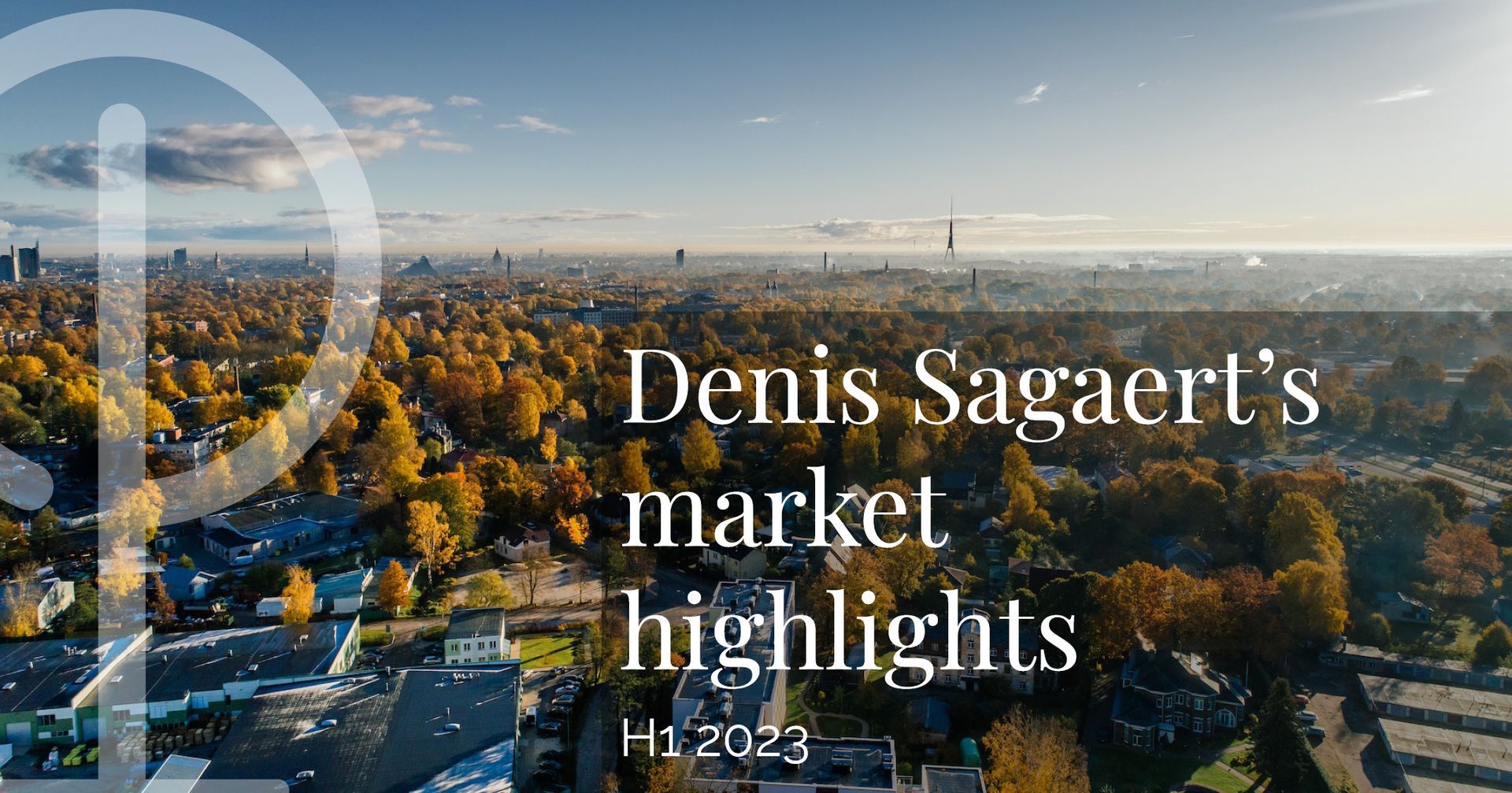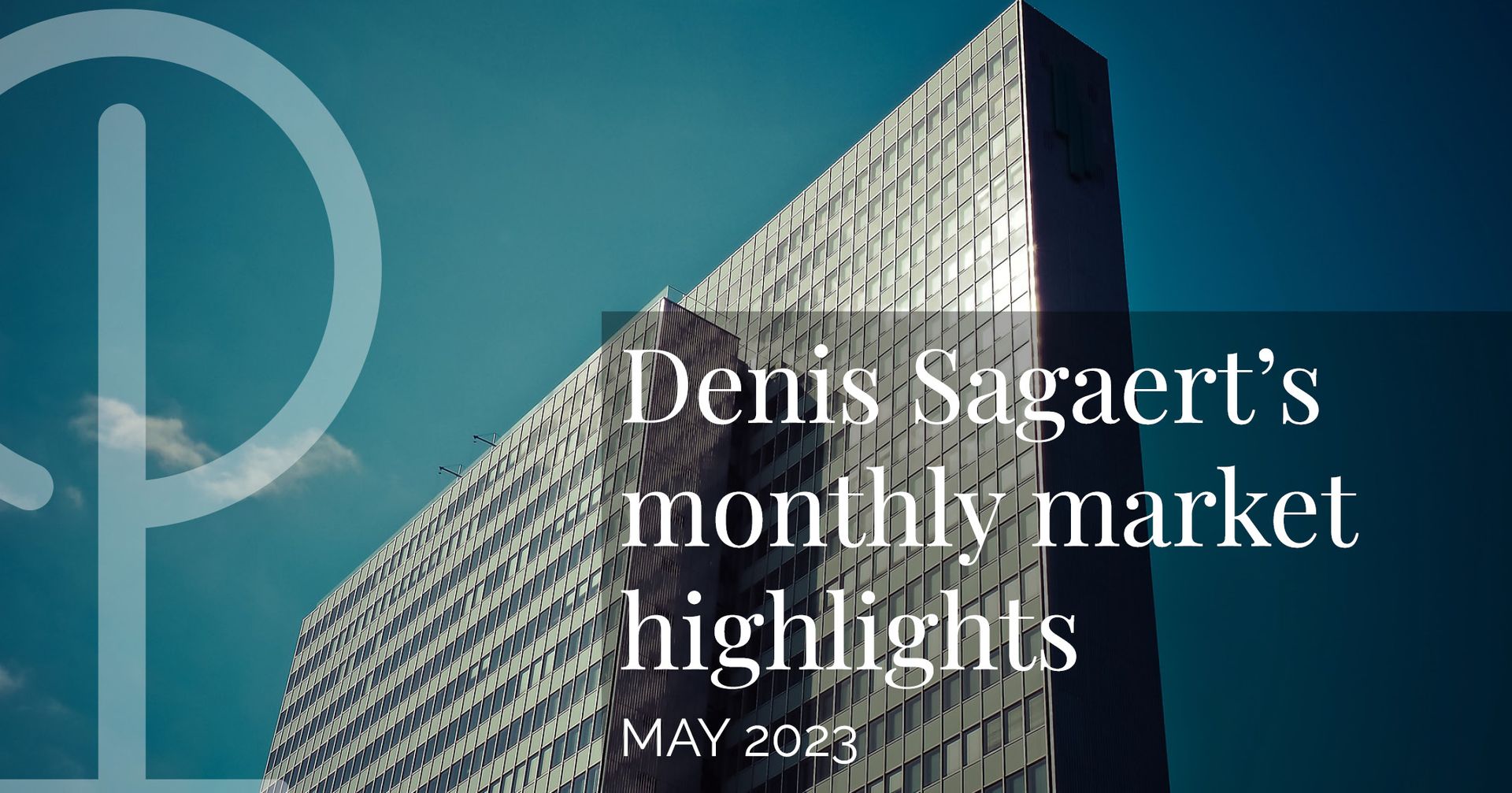Denis Sagaert’s monthly market highlights - July '23
Equity markets: Nasdaq 100 close to all-time high
World equities remained very well oriented in July with strong gains of 2.6% in euro and 3.2% in local currencies.
The first semester laggards outperformed in July. This included small and mid-caps stocks, up between 4 and 5% in Europe and even a bit more in the US. Emerging market equities, and Chinese equities in particular, made up some lost ground vs. developed markets. At the other end, the Eurostoxx 50, representing Euozone’s largest companies, was up “only” 1.7%.
Performance dispersion between sectors diminished. Financial and energy stocks posted strong returns. The IT sector continued to make progress, but in line with broader indices. The Nasdaq 100 gained 3.8%, mainly thanks to the performance of Nvidia, Alphabet and Meta Platforms (> +10%). The index is not far from its high reached in November 2021. It is up 44.5% year to date. To find an even stronger performance over 7 months, one would have to go back to 2009 (rebound following the global credit crisis) and 1999/early 2000 (creation of the internet bubble).
Bond markets: stronger investor confidence
July was not such a good month for bonds. The Bloomberg Global Aggregate EUR-Hedged Index, which represents the global investment grade bond universe, declined by 0.1%. This slightly negative performance was due to government bonds. The yield on 10-year Treasury bonds rose from 3.84% to 3.96%. Likewise, the yield on 10-year Bunds rose by 10 bps and closed the month at 2.49%. Corporate bonds provided positive performance. Euro-denominated corporate bonds were up 1.1%, with little difference between investment grade and high yield bonds.
Comparing the earnings yield on the S&P 500 (4.7%) and on 10-year Treasuries (3.96%), there is a 0.7% premium to own equities. This difference is minimal. It was 1.8% at the beginning of the year. It shows high confidence among investors. In the same vein, the price earnings ratio on Nasdaq 100 is close to 29 for 2023 and 24.5 for 2024.
Central banks: further increase in key rates
The Federal Reserve and the European Central Bank hiked interest rates by a quarter point. The Fed’s new target range is 5.25% - 5.50%. In its statement, the US central bank let the door open for a pause at the next meeting, depending on inflation getting closer to 2%. US inflation is definitely slowing down. The latest CPI release was 3% for June compared to 4% in May. The Fed also looks closely at the Core CPI, which went down to 4.8%. The European Central Bank raised its deposit rate to 3.75%. Its statement included encouraging signs on inflation, but balanced by the fact that underlying inflation remains high.
Currencies and commodities: euro demonstrates resilience against dollar, while gold and oil prices surge
The euro rose slightly vs the dollar (+0.8%) but weakened vs. other currencies, mostly the NOK (-4.9%).
Despite lower inflation and higher interest rates, gold gained 2.4% in USD. Crude oil went up by about 15%
More news












